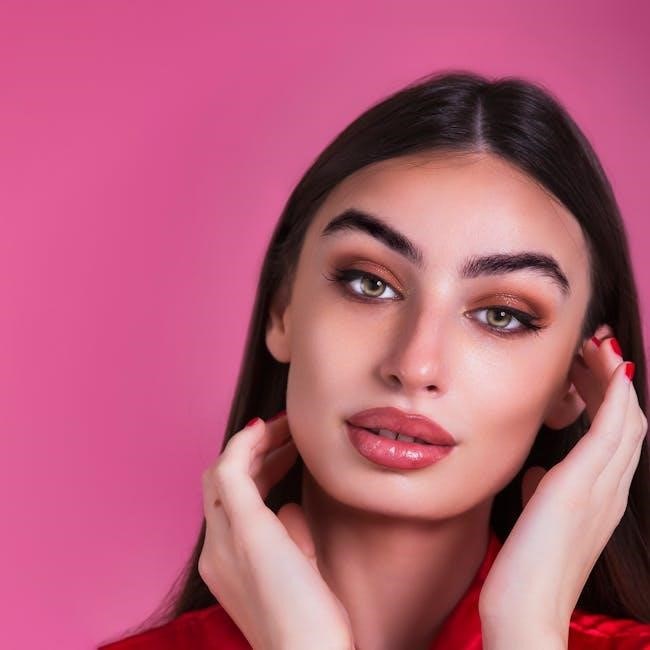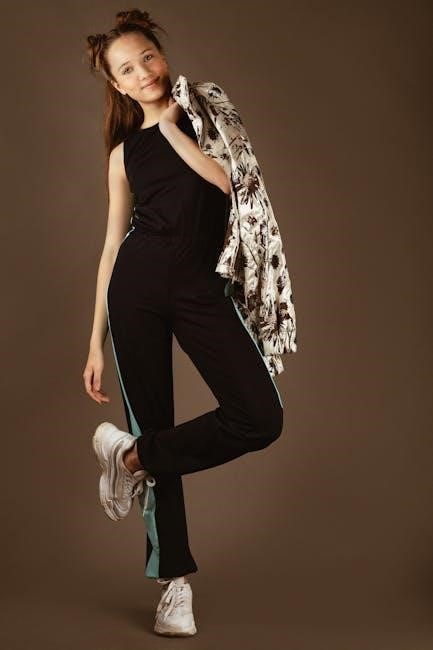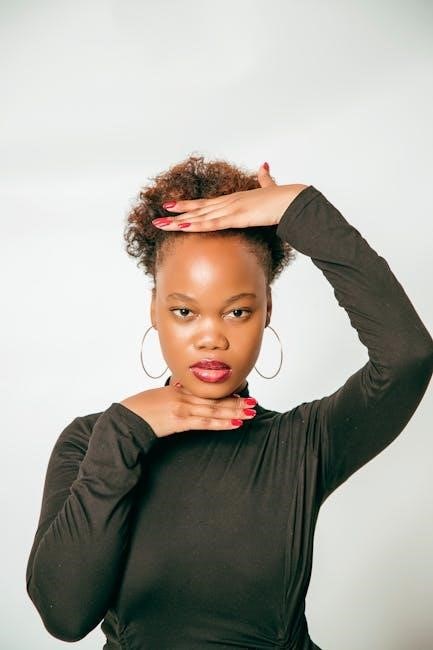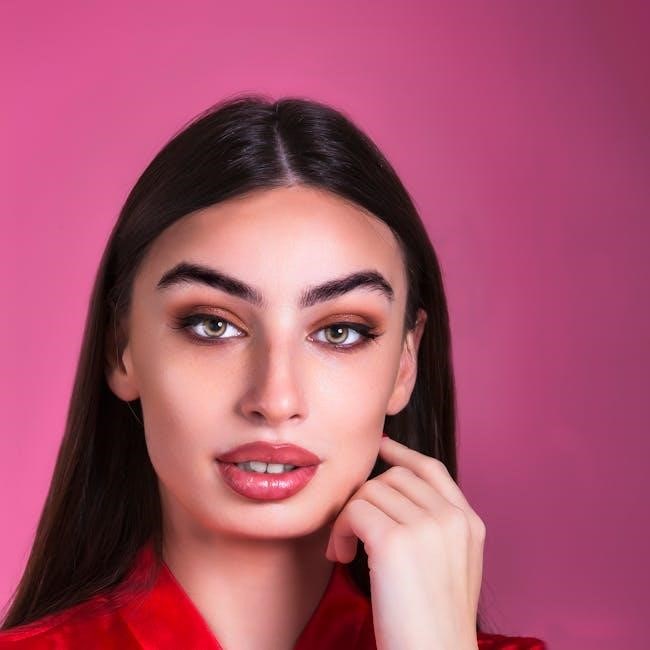Face guides are essential tools for artists seeking to accurately represent the human visage. These guides provide structured approaches to understanding facial proportions and anatomy, aiding in creating realistic portraits. They offer foundational knowledge for depicting diverse faces with precision.

Understanding Facial Anatomy
In portraiture, understanding facial anatomy is critical for realistic depictions. Knowing the underlying bone structure and muscle placement helps artists accurately capture the nuances of the human face. This knowledge enhances the depth and dimension of your portraits.
Major Facial Bones
Understanding the major facial bones is fundamental to accurately portraying the human face. The skull, a slightly flattened sphere, provides the basic structure. Key bones include the frontal bone (forehead), the zygomatic bones (cheekbones), and the maxilla (upper jaw). The mandible (lower jaw) is also crucial, influencing the face’s shape and profile. The nasal bone defines the nose bridge, and the orbital bones protect the eyes.
These bones dictate facial proportions and contours. Recognizing their shapes and relationships allows artists to create realistic and expressive portraits. Studying these bony landmarks enhances the ability to capture individual likeness and structural integrity. Awareness of these elements is essential for any artist aiming to depict the human face with accuracy and depth.
Facial Landmarks
Facial landmarks are key reference points for drawing accurate faces. These include the brow ridge, which defines the upper eye socket, and the cheekbones, which determine the width of the face. The tip of the nose and the corners of the mouth are also vital. The chin’s prominence and shape are important identifiers. Other landmarks include the hairline, jawline, and the points where the ears attach.
Using these landmarks helps establish correct proportions and symmetry. They guide the placement of facial features, ensuring realism. Understanding these points allows artists to capture unique characteristics. Recognizing the subtle variations in landmark placement enhances portrait accuracy. These landmarks are crucial for depicting individual likenesses. Mastery of these reference points elevates the artist’s ability to create compelling and true-to-life portraits.
Basic Facial Proportions
Understanding basic facial proportions is crucial for drawing realistic faces. These proportions serve as a foundation for accurate feature placement and overall balance. Mastering them enhances the ability to create compelling and believable portraits through art.
Dividing the Face into Thirds
Dividing the face into thirds is a fundamental technique for establishing facial proportions in art. This method involves mentally separating the face into three equal sections: the forehead, the mid-face (from the eyebrows to the base of the nose), and the lower face (from the base of the nose to the chin).
This division provides a simple framework for ensuring that facial features are appropriately sized and positioned. It acts as a helpful guide, especially for beginners, to create a balanced and realistic portrait. While individual variations exist, this basic structure remains a cornerstone of facial anatomy in art. Remember that mastering this division can significantly improve the accuracy and realism of your face drawings, giving your portraits a solid foundation to build upon.
The Eye Line and Eye Spacing
The eye line and eye spacing are crucial elements in achieving accurate facial proportions. The eye line generally sits halfway between the top of the head (excluding hair) and the chin. This line serves as a key reference for positioning the eyes correctly on the face.
For eye spacing, the ideal distance between the eyes is often considered to be the width of one eye itself. This means you should be able to fit another eye comfortably between the two existing eyes. Deviations from this ideal can occur, reflecting individual variations, but it provides a solid starting point. Attention to both the eye line and eye spacing greatly impacts the realism and likeness of your face drawing, contributing to a balanced and harmonious composition.
Nose Length and Width
Nose length and width are vital aspects of facial proportions that significantly impact the character and realism of a portrait. Typically, the nose length is about one-third of the face’s total length, measured from the eye line to the bottom of the chin. This proportion provides a foundational guideline, though individual variations always exist.
The nose width, at its widest point (typically around the nostrils), generally corresponds to the distance between the inner corners of the eyes. Observing and accurately representing these proportions contribute to creating a believable and balanced face. Remember that perspective and angle can alter these perceived measurements, adding complexity when drawing faces from different viewpoints. Careful attention to nose length and width ensures a more accurate and compelling depiction.
Mouth Width and Placement
Mouth width and placement are critical elements in defining facial expressions and overall face structure. As a general guideline, the width of the mouth often aligns with the center of each eye or approximately the distance between the pupils. However, this is a flexible rule, and individual variations significantly contribute to unique appearances.
The vertical placement of the mouth is typically about one-third of the distance from the base of the nose to the bottom of the chin. Accurately capturing the subtle curves and shape of the lips is essential for conveying emotion and personality. Consider how perspective can alter the perceived width and placement, especially when drawing from angles. Paying close attention to these details enhances realism and expressiveness.
Male vs. Female Face Proportions
Understanding the distinctions between male and female face proportions is crucial for accurate portraiture. These differences stem from variations in bone structure and feature sizes, influencing the overall appearance and perceived gender.
Differences in Bone Structure
Male and female faces exhibit noticeable differences in bone structure, impacting their overall shape and appearance. Male skulls tend to have more prominent brow ridges and a squarer jawline, contributing to a more angular and defined look. The male forehead often slopes back more noticeably, while the female forehead is typically smoother and rounder.
The male chin is generally wider and more pronounced, whereas the female chin is often more delicate and tapered. These skeletal variations influence the soft tissues overlying the bone, further accentuating the differences in facial contours. A deeper understanding of these structural distinctions is essential for accurately portraying gender in portraiture.
Moreover, the nasal bone structure in males can be more prominent, leading to a more defined nose shape compared to females. These subtle yet significant skeletal variations collectively contribute to the distinct characteristics associated with male and female faces, influencing artistic representation.
Variations in Feature Size
Alongside differences in bone structure, feature size contributes significantly to distinguishing male and female faces. Generally, male faces tend to have larger features compared to female faces. The nose, for instance, is often wider and longer in males, exhibiting a more prominent bridge. Male eyes may appear smaller relative to the overall face due to larger brow ridges.
Conversely, female faces often feature larger eyes, contributing to a softer and more youthful appearance. Lips can also vary; males typically have thinner lips, while females often have fuller lips, accentuating their sensuality. The size and shape of the ears can also differ subtly between genders, though this is less pronounced.
These variations in feature size, combined with differences in bone structure, create the overall impression of masculinity or femininity. Understanding these nuances is critical for portrait artists aiming to capture gender accurately. However, individual variations exist, and these are only general guidelines.

Drawing Faces from Different Angles
Depicting faces from various angles requires understanding how perspective influences proportions. Mastering this skill allows for dynamic and realistic portraits, capturing the subject’s essence from any viewpoint. Practice is crucial for achieving accurate representations.
Perspective and Proportion
When drawing faces, understanding perspective is crucial. The angle from which you view the face dramatically alters how proportions appear. Perspective affects the perceived size and shape of facial features, demanding careful observation. A face viewed from below will seem elongated. Conversely, a view from above shortens features. Mastering this involves considering how lines converge and recede into the distance.
Accurate proportions are the bedrock of realistic drawings. It’s important to note that perspective skews these proportions. One must adjust feature placement and size relative to the viewing angle. Perspective, therefore, is not just about lines; it’s about how the eye interprets spatial relationships. Regular practice drawing faces at different angles will hone your skills. Dont be afraid to deviate from the general guidelines when capturing a specific persons likeness.
Dealing with Foreshortening
Foreshortening is a visual effect that occurs when an object’s dimension along the line of sight is shorter than its dimension across the line of sight. It is a crucial element in creating depth and realism when drawing faces from an angle. Effectively dealing with foreshortening requires a solid understanding of perspective and proportion.
When a face is angled away from the viewer, features closer to the viewer appear larger, while those further away seem compressed. This compression is foreshortening. To accurately depict this, visualize the face in three-dimensional space. Mentally “map” the features onto a sphere to understand how they distort as they recede. Practice drawing simple shapes, like cylinders and cubes, in foreshortening to train your eye. Always compare the relative sizes of different facial elements. Consistent practice is the best way to master this concept.

Tools and Materials for Face Drawing
Essential tools for face drawing include a range of pencils, erasers, blending stumps, and suitable paper. These materials allow artists to create detailed portraits with accurate proportions and shading, enhancing realism and expression.
Pencils and Their Uses
Pencils are fundamental tools for face drawing, each grade offering unique capabilities for different stages and effects. Harder pencils (H grades) are ideal for light sketches, outlining basic proportions, and adding subtle details without smudging easily. They maintain sharp points, enabling precise linework essential for capturing the underlying structure of the face.
Softer pencils (B grades), on the other hand, excel in creating darker values, deep shadows, and rich textures. These are perfect for defining contours, adding depth to the eyes, and rendering realistic skin tones through skillful shading techniques. The softer lead allows for smoother blending, achieving gradients, and creating a sense of volume within the facial features.
Experimenting with various grades allows artists to build up layers of tone, gradually refining the drawing and bringing out the nuances of the subject’s likeness. Mastering the use of different pencils is crucial for achieving depth and realism in face drawing.
Erasers for Shading and Correction
Erasers are indispensable tools in face drawing, serving beyond simple error correction. Kneaded erasers are particularly useful for lifting graphite, creating subtle highlights, and softening edges, which is essential for nuanced shading. Their malleability allows artists to shape them into fine points for precise erasing in delicate areas.
Plastic or vinyl erasers provide clean, sharp erasures, ideal for removing darker marks or refining outlines. They are effective for creating crisp details and correcting significant errors without damaging the paper. Additionally, they can be used to create textures by partially lifting graphite from the surface.
Erasers can also be employed for shading techniques, such as reverse shading, where graphite is applied broadly and then selectively removed to form highlights and contours. This method adds depth and dimension to the drawing, mimicking the effects of light on the face. Mastering the use of erasers enhances control and allows for greater artistic expression.

Common Mistakes and How to Avoid Them
One common mistake in face drawing is inaccurate proportions. To avoid this, begin with a light sketch establishing the basic structure and key landmarks, such as the eye line and nose placement. Regularly compare your drawing to references to ensure proportions align. Another frequent error is neglecting the underlying anatomy.
Understanding the bone structure and muscle placement helps to create a more realistic representation. Overworking details too early can also lead to problems. Focus first on establishing the overall form and values before adding fine details. Rushing the process often results in a flat or distorted image.
Additionally, many artists struggle with symmetry. While the human face isn’t perfectly symmetrical, gross imbalances can be distracting. Use guidelines and frequent mirroring to check for and correct any significant asymmetry. Finally, neglecting to practice regularly hinders improvement. Consistent practice and observation are crucial for mastering face drawing.
